Special Feature
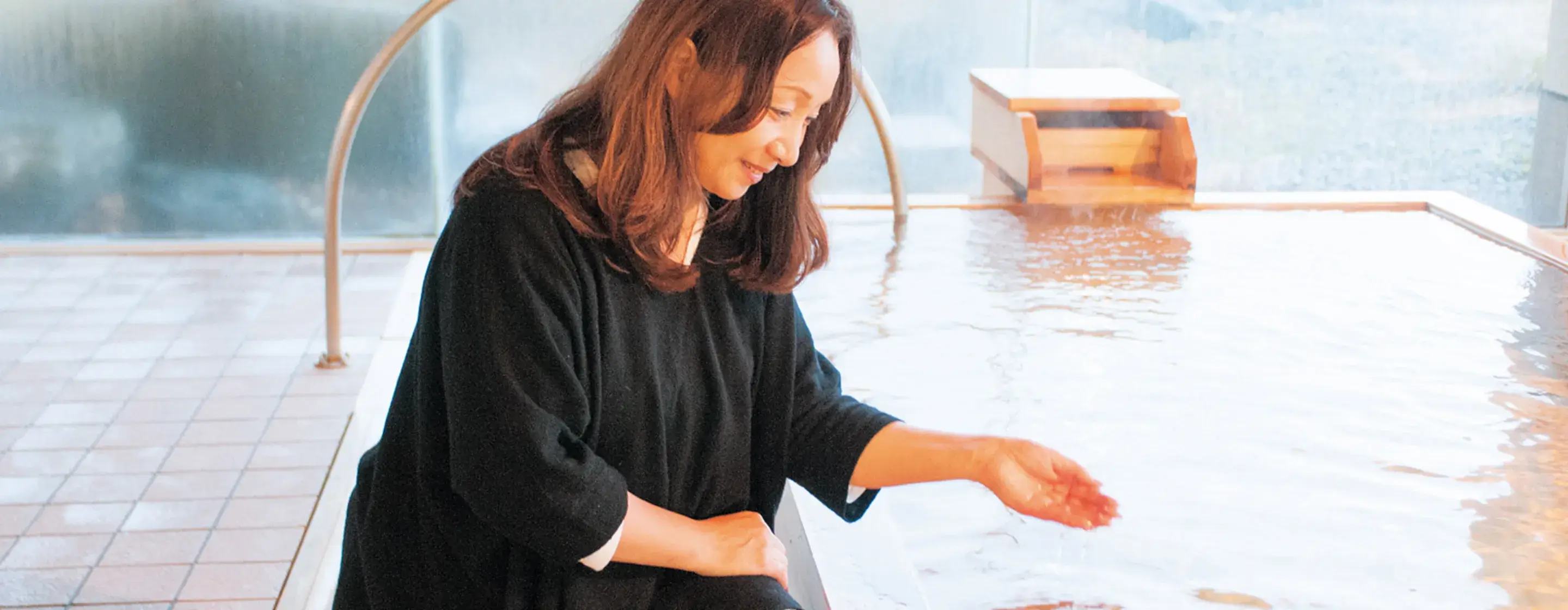
Shonai’s Hot Springs: Part 2
Onsen, as hot springs are known in Japan, are said to rejuvenate both body and soul as well as offer skin and other health benefits.
Vacationing at an onsen resort offers a unique way to experience the local land. Yamagata Prefecture’s abundance of onsen means that every town and city in the area offers the chance to soak in natural thermal waters.
Shonai is home to onsen resort areas with impressively long histories along the seaside and in the mountain highlands. Lots of onsen around Japan are said to offer beauty benefits, but according to onsen beauty researcher Hiroko Ishii, Shonai is remarkable for its rich variety of them. In this second of a two-part series on Shonai’s onsen, Ishii visits onsen resort areas along the seaside and a river.
Seaside Yunohama Onsen: White Sands, Sea Breezes and Breaking Waves
Yunohama Onsen lies along the Sea of Japan, with scenic views to the north of sacred Mt. Chokai and a white-sand beach framed by green pine trees as well as a craggy coastline to the south. Yunohama Onsen is also known for its gorgeous sunsets over the water and has deservingly been included in the list of the “100 Best Sunsets in Japan.”
The hot springs here were discovered around a thousand years ago. Legend has it that sometime between 1053 and 1058, a fisherman discovered the hot springs after seeing a turtle soaking in hot water by the sea, and for a time the onsen was called “turtle hot springs.”
Yunohama Onsen rose to prominence in modern times as one of the three top onsen areas in the Tohoku region and remains popular among tourists today as a resort area along the Sea of Japan.
Ishii comments, “One of the major attractions of this region is the blessings the sea brings.The seawater contains more than 130 types of marine minerals essential for living creatures.” The sea breezes that blow in from the ocean in the afternoon and evening bring these minerals from the sea to the land. Simply taking an afternoon walk in places with a view of the ocean is said to be a form of ocean therapy that helps soothe the spirit. Yunohama Onsen’s springs contain chloride, which is said to warm the body to its core. Soaking in these baths in winter is especially good for preventing chills and promoting blood circulation.
Ishii stayed at Kameya Hotel located in the Yunohama area, on its special top floor called Hourai.
The Hourai floor opened in 2012. Each of its guest rooms features a private hot spring bath along with special amenities, interior furnishings, and cuisine. There is also a private bar and lounge for use by overnight guests, who after checking in can spend their entire stay on the Hourai floor.
Kameya Hotel president Kimikazu Abe, in describing the background to opening the Hourai floor, comments “Service today means different things to different people. We wanted to create the ‘Kameya Hotel best of the best’ for people seeking a higher level of quality, similar to flying first class on an airplane.” The floor was designed in collaboration with Tohoku University of Art and Design, and its students designed one of the floor’s six guest rooms.
“We developed a relationship with Masataka Baba (President of design firm Open A Ltd.), who teaches at the university. We provided this opportunity as a way to develop students’ real-world skills,” adds Abe. The aptly named Cloud Room features a white color palette and curved space that evokes a dreamy feeling like being in the clouds. The cuisine also receives Ishii’s stamp of approval as “among the highest quality in Japan.” Guests can indulge themselves with course meals showcasing fresh, seasonal ingredients from Shonai’s sea and mountains, such as abalone and Fujisawa turnip.
Experiencing the power of the ocean with all your senses puts your body and your mind in a natural state. This is the greatest therapeutic benefit of visiting Yunohama Onsen.

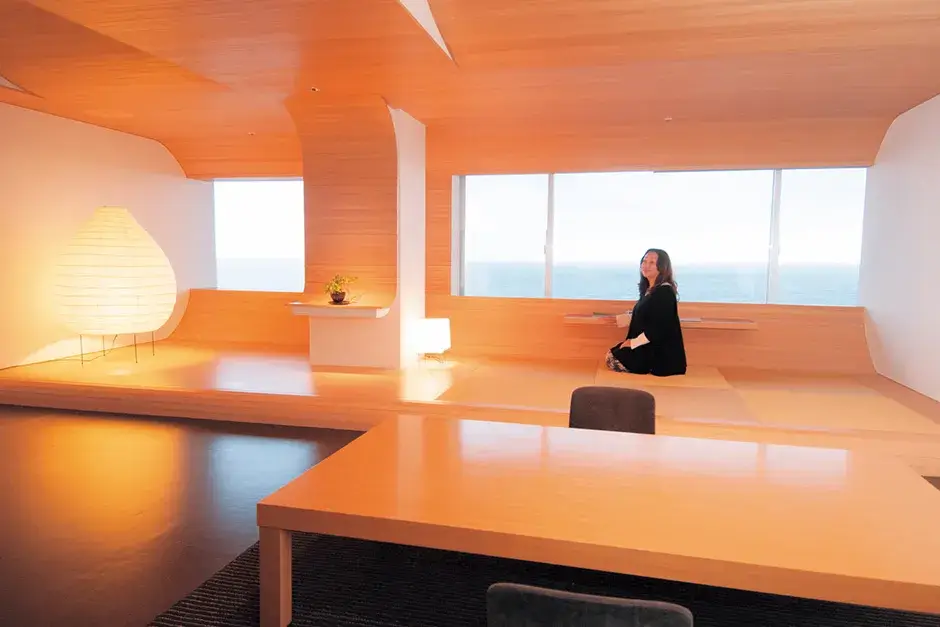
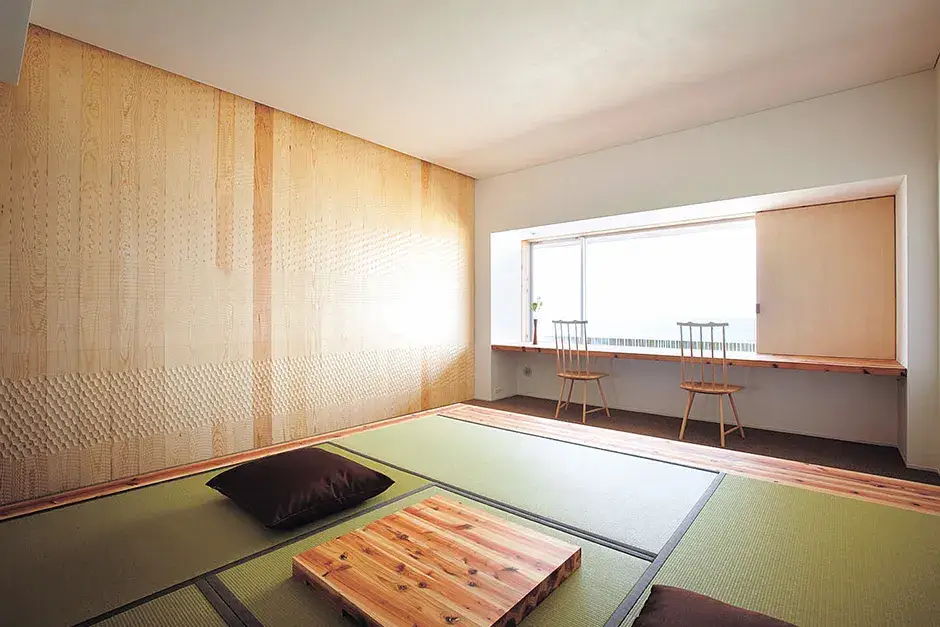
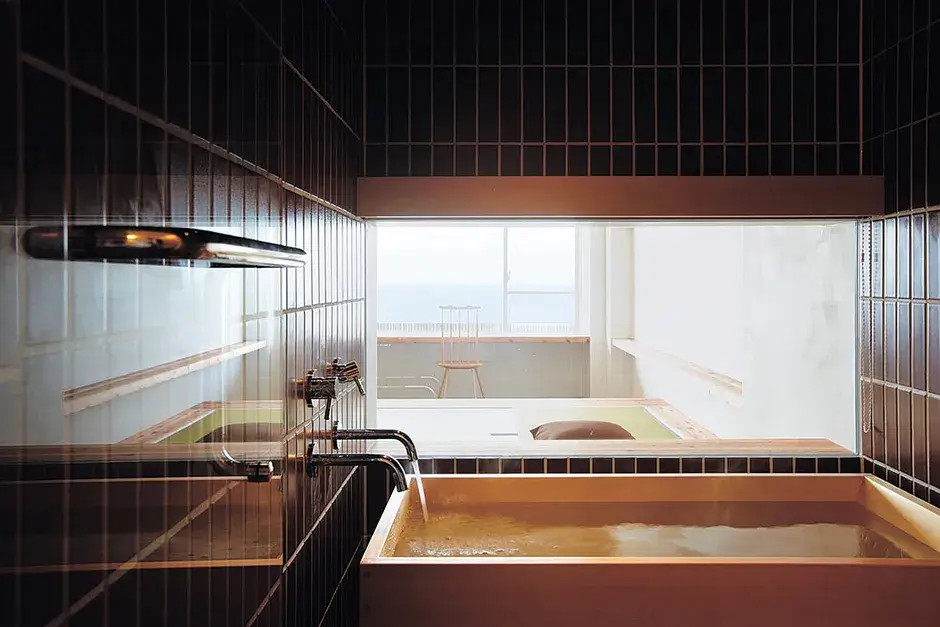
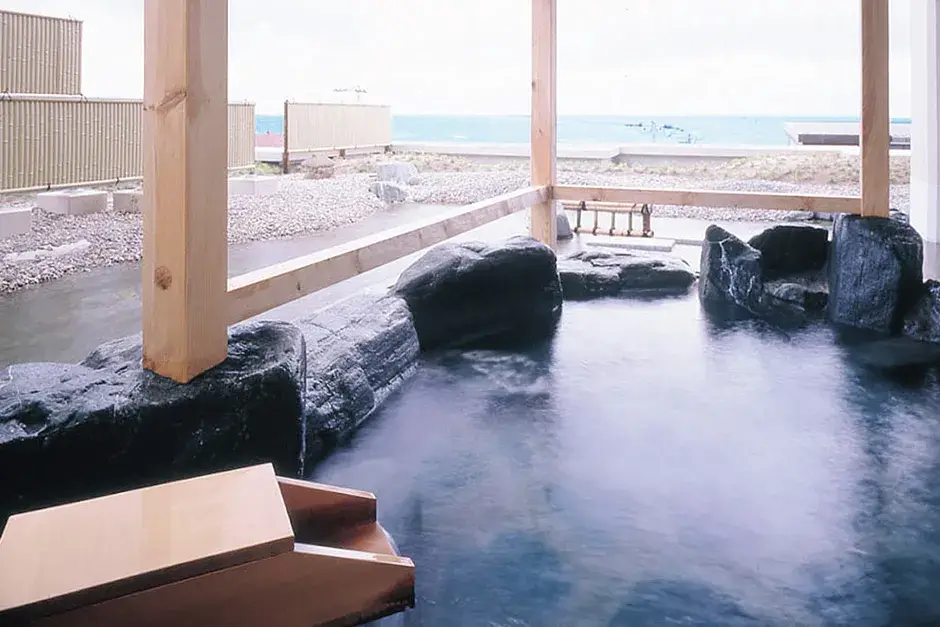
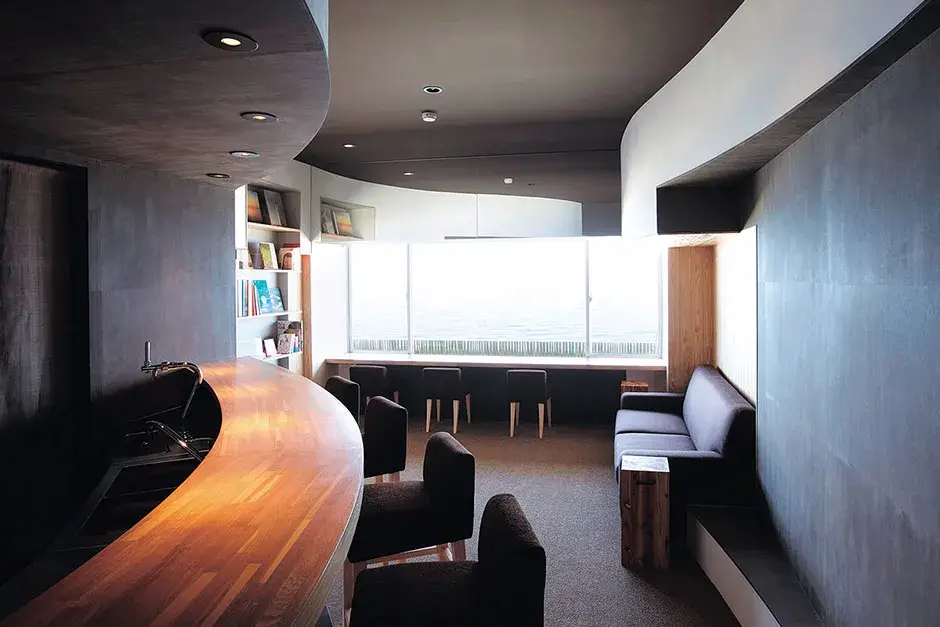
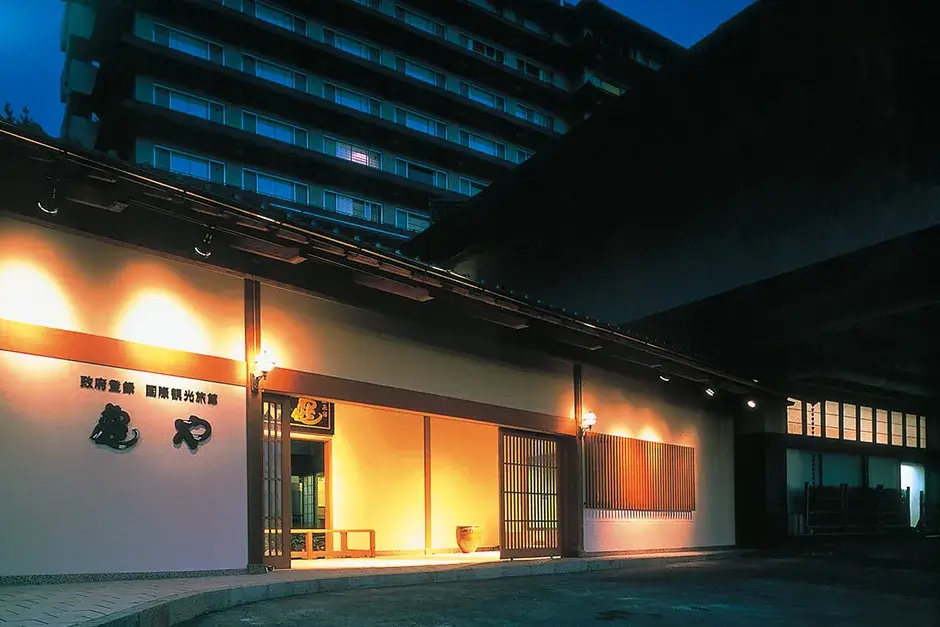
Atsumi Onsen: Hot Spring Resort Town with a Burbling River
Atsumi Onsen, nestled between Mt. Atsumidake to the east and the Sea of Japan to the west, has been operating for around 1,300 years. Large ryokan (inns) and three-story wooden buildings home to historic ryokan line both sides of the Atsumi River that runs through the town, giving it a retro feel.
In the spring, rows of cherry trees paint the riverside a pale pink. In early summer, visitors can enjoy the roses blooming on some 3,000 rose bushes in around 90 varieties at Atsumi Onsen Rose Garden, located on a hill overlooking the town. There’s a morning market open from spring to fall that has been running for over 260 years, and overnight visitors dressed in colorful yukata (cotton kimono) gather along the river flowing through the onsen resort. The town recently underwent a makeover with the concept of “creating a fun place to stroll around.” On weekends and holidays, Atsumi Onsen is now full of people walking around, relaxing in the foot baths along the river, and enjoying lunch and a foot soak at Chitto Motché café, which also has foot baths.
One of the best-known inns in Atsumi Onsen is Bankokuya, which has been operating for over 300 years. Bankokuya focuses on offering guests “the pleasures of the mountains and the waters,” and has made the list of “The 100 Best Hotels and Inns in Japan Selected by Professionals” for 40 consecutive years. It also made the list of the top nine overall inns in 2025, making it one of the leading onsen inns in the Tohoku region. Seasonal flowers decorate its interior spaces with fresh color, while multicourse meals delight the eyes and the palate. Bankokuya’s high-quality hospitality comes through in everything it does.
Hiroko Ishii soaked in its Togen Sansui large communal bath, now known as Garden Sato no Yu, and described her experience. “When the temperature at the source is high, it’s usually difficult to use 100 percent pure hot spring water directly from the source in the baths. Bankokuya, however, has figured out a way to lower the source temperature so that it uses only water directly from the source in its large baths. Their commitment to providing this hot spring experience was impressive.” The springs feeding Atsumi Onsen flow at a rate of 1,300 liters per minute and come out at 68℃. The waters are rich in sodium, calcium, chloride, and sulfates, with chloride springs known for heating the body and sulfate springs having moisturizing properties. Atsumi’s waters are said to be effective for dry skin and sensitivity to cold.
In addition to the baths featuring hot spring water directly from the source, the Rakusan and Rakusui large communal baths located on the third floor of Bankokuya switch between men’s and women’s bathing at set times of the day so that all guests are able to enjoy soaking in three large communal baths. According to Kanako Sato from Bankokuya’s Marketing Department, “We have many different baths, including open-air baths that offer the feel of the outdoors, lie-down baths, silky baths with microbubbles, and spacious large communal baths. Guests love going around our inn, trying the different baths.”
Strolling around the town and listening to the burbling sounds of the river, gazing at the scenic views that change with each season, and visiting a café with foot baths are some of Atsumi Onsen’s highlights. Not to mention letting yourself unwind in hot spring baths surrounded by nature and savoring delicacies from the mountains and the sea. The hot spring resort town of Atsumi Onsen is the perfect place to reward and rejuvenate yourself.
-
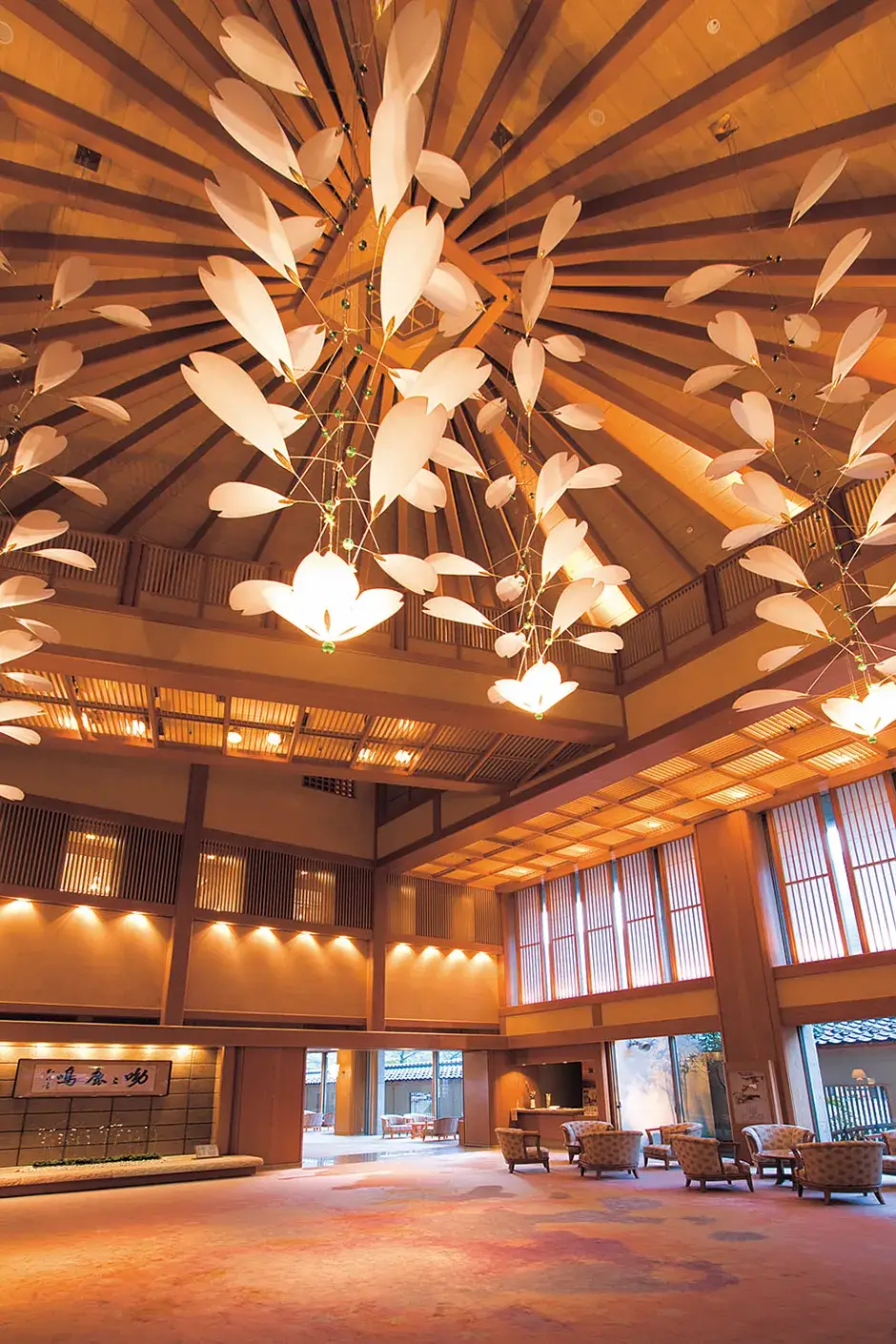
Bankokuya’s lobby at Atsumi Onsen -

Bankokuya guest room at Atsumi Onsen -
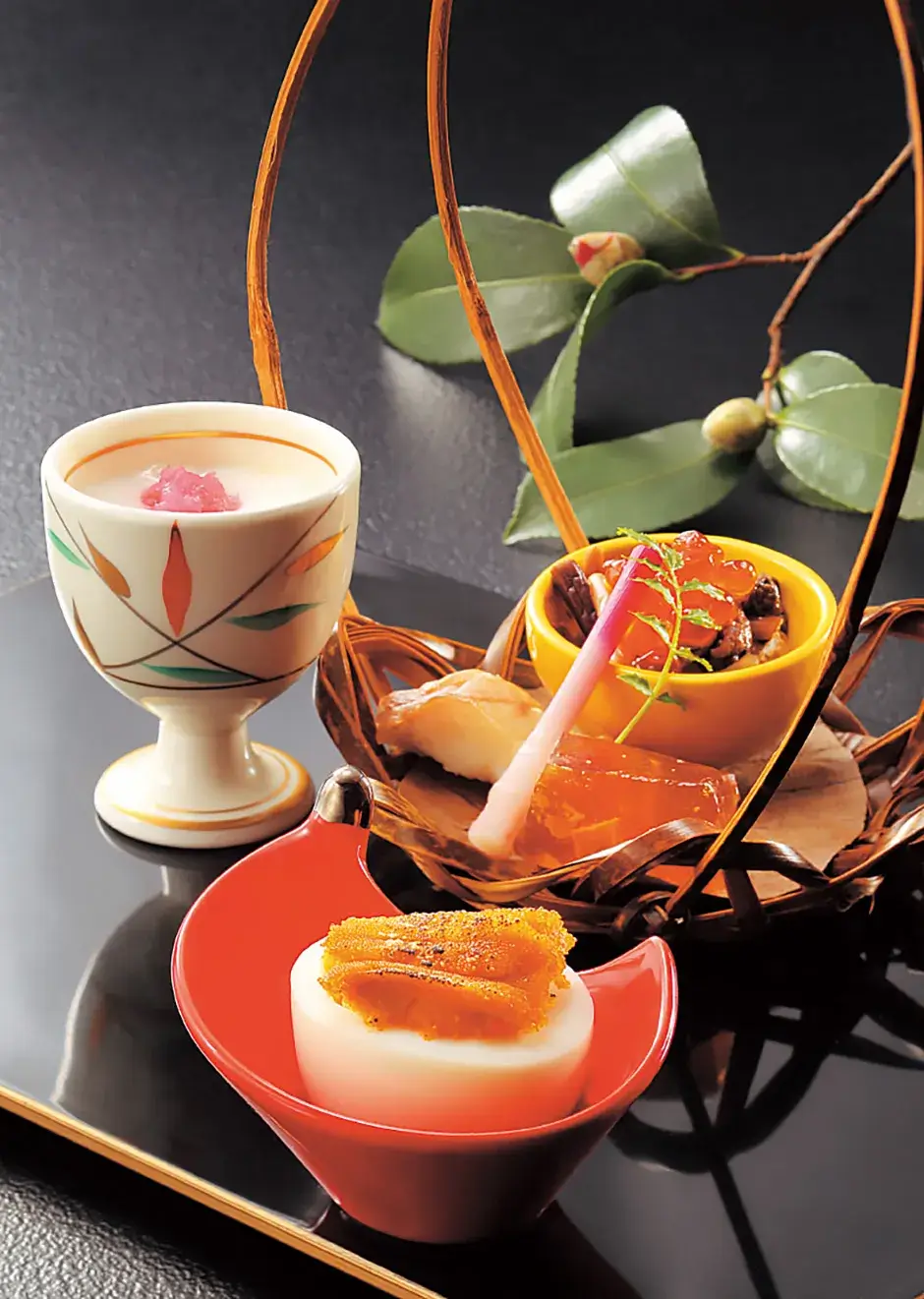
Cuisine made with fresh, seasonal ingredients mainly from the Shonai region. -
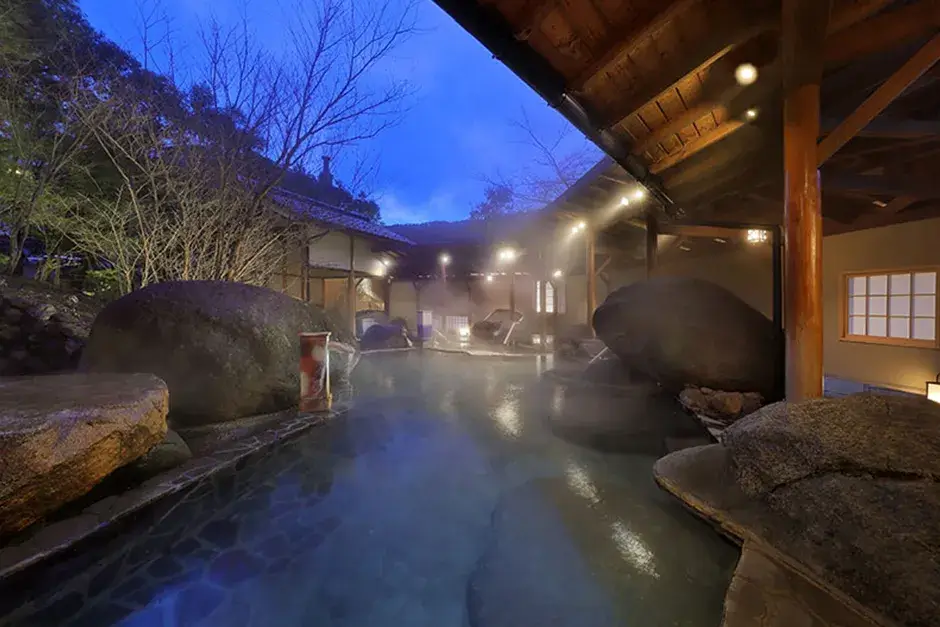
Sakura no Yu open-air bath on the first floor of Bankokuya at Atsumi Onsen (renovated in 2023) -
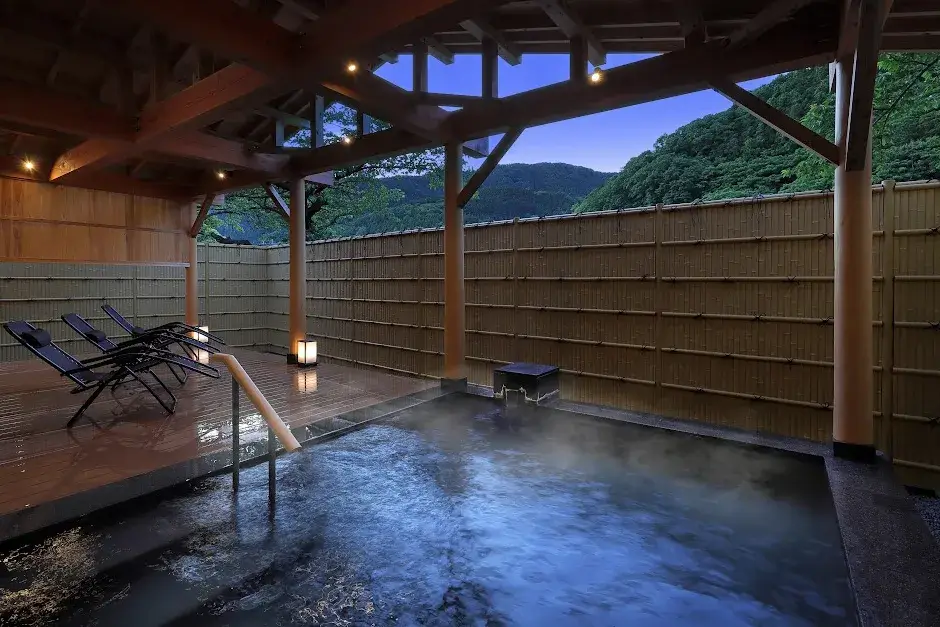
Sato no Yu open-air bath on the first floor of Bankokuya at Atsumi Onsen (renovated in 2023) -
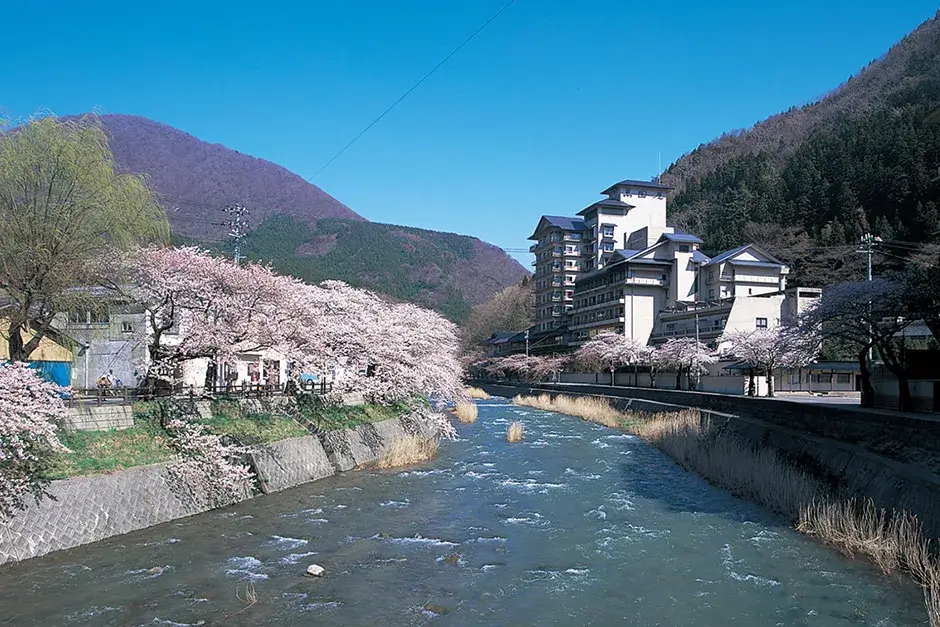
Bankokuya inn at Atsumi Onsen
